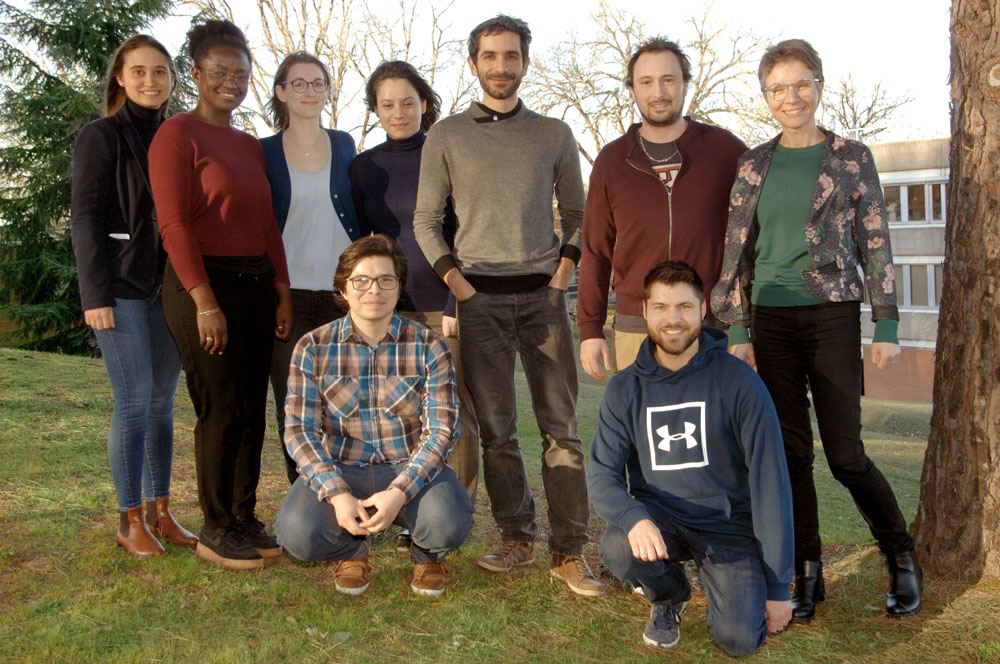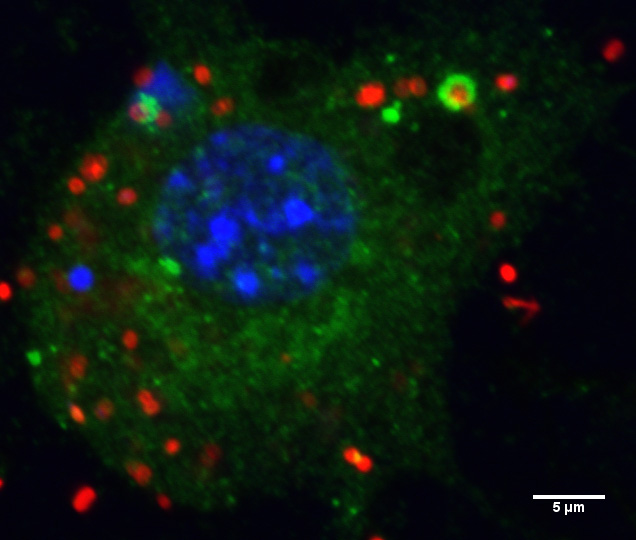Immune Detection and Elimination of Pathogens

Group Leader
Over the last 20 years, cell deaths emerged as crucial processes driving inflammation, host defense against infections and pathologies. To understand the determinants of various cell deaths, microbial interactions with cells are a fantastic field of investigation as pathogens use virulence factors to modify the regulation of various host-derived cell death pathways.
Our group is investigating what it is about the innate immune system that confers protection on the host, and why such a fantastic machinery can fail.

Inflammasomes are intracellular multi-protein complexes that play essential functions in immunity against microbial pathogens. Upon microbial sensing, inflammasomes induce protease caspase-1-dependent maturation and release of the pro-inflammatory cytokines interleukin (IL)-1β and IL-18 as well as gasdermin-D-dependent cell necrosis, called pyroptosis. While both pyroptosis and IL-1β/IL-18 release play key parts in controlling microbial infections, the host-regulated pathways that promote detection of microbial ligands by cytosolic inflammasome-forming sensors and the non-canonical functions of inflammasome-derived components, remain to be fully characterized.
Building on our expertise in the field of inflammasome regulators during microbial infections, our group aims at answering one major question: what it is about the innate immune system that confers protection on the host, and why such a fantastic machinery can fail.
To address this question, we use a combination of state-of-the-art and innovative technologies in biochemistry, molecular and cell biology, and immunology in various in vitro and in vivo models. For example, we are developing an unbiased genome-wide search for novel effectors involved in inflammasome activation based on the unprecedented coupling of the CRISPR-Cas9 technology to automated visual high-throughput screening. Therefore, this multidisciplinary research program aims at providing breakthroughs in the field of microbial pathogens detection by the host immune system, and to nucleate entirely novel immune paradigms on microbial sensing by new unsuspected host cytosolic proteins, namely the gasdermins.
Team members
Research Scientists
Céline Cougoule (CNRS)
Raoul Mazars (University)
Etienne Meunier (CNRS)
Research Engineers
David Pericat (CNRS)
Audrey Hessel
Postdoctoral Fellow
Remi Planès
PhD Students
Salimata Bagayoko
Stephen Leon Icara
Karin Santoni
Miriam Pinilla
Our research projects
To unlock the immune response: The cellular and molecular means by which intracellular sensors detect pathogens
To shortcut the intracellular PRRs: Non-canonical functions of cytosolic-derived sensors
Stromal immunity: To decipher the immune and microbicidal responses of the epithelia
Santoni et al. (2022) Caspase-1-driven neutrophil pyroptosis and its role in host susceptibility to Pseudomonas aeruginosa. PLOS Pathog
Planès et al. (2022) Human NLRP1 is a sensor of pathogenic coronavirus 3CL proteases in lung epithelial cells. Mol Cell
Bagayoko et al. (2021) Host phospholipid peroxidation fuels ExoU-dependent cell necrosis and supports Pseudomonas aeruginosa-driven pathology. PLOS Pathog
Eren, Planès et al. (2020) Irgm2 and Gate-16 cooperatively dampen Gram-negative bacteria-induced caspase-11 response. EMBO Rep
Santos et al. (2018) LPS targets host guanylate-binding proteins to the bacterial outer membrane for non-canonical inflammasome activation. EMBO J
Meunier et al. (2015) Guanylate-binding proteins promote activation of the AIM2 inflammasome during infection with Francisella novicida. Nat Immunol

Murine macrophage infected with Francisella novicida (Red) and stained for LC3 (Green).
Collaborations
Olivier Neyrolles, IPBS institute, Toulouse, France
Julien Buyck, Univ. of Poitiers, France
Jessica Quintin, Pasteur Institute, Paris, France
Patrizia D’Adamo, San Rafaele institute, Milan, Italy
Petr Broz, Univ. of Lausanne, Lausanne, Switzerland
Peter J. Peters, Maastricht MultiModal Molecular Imaging Institute (M4I), Maastricht, Netherlands
Hans Clevers, Hubrecht Institute, Utrecht, Netherlands
Funding
The team is supported by several grants and funding from:
– The European Research Council (ERC Starting Grant 2019-2023)
– Agence Nationale pour la Recherche (2019-2022)
– ATIP-Avenir (2017-2020), young team leader program
– Fondation pour la Recherche Médicale (2016-2019), «Amorçage de jeunes équipes » program
– University of Toulouse
– Fondation Fonroga
– Partnership Hubert Curien (PHC) VAN GOGH 2018


